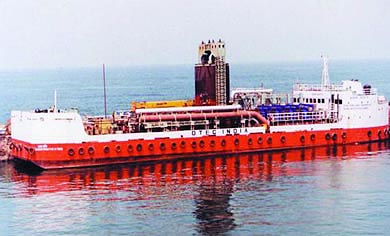| Web Japan > NIPPONIA No.28 > Special Feature* |
|
|
|
NIPPONIA No.28 March 15, 2004
|
|
Special Feature*
Changing a winter problem into a summer solution
Energy from the snow
 
The city of Bibai is located near the center of the Ishikari Plain on Hokkaido, where the annual snow accumulation is more than 8 meters—higher than most other places on the island. Year after year, after every snowfall in Bibai the extra snow had to be collected and placed in designated areas until the spring, when more work was done to melt it.
The question was, couldn't the snow be changed into a resource? In 1997, the Bibai Natural Energy Research Association was established and given the job of discovering how to use the snow. The result today: the snow refrigerates warehouses and air-conditions buildings when it is warm outside.
Snow is stored in warehouses to keep them refrigerated at 0 to 4 degrees Celsius all year. The temperature is ideal for storing farm products, and the snow keeps refrigeration expenses below what it would cost using electricity.
Snow is also stored in storehouses attached to condominiums and other buildings. Two methods are used to cool the air: in some buildings, air circulates between the storehouse and the rooms; in others, cold water from melted snow is circulated.
One ton of snow can be converted into the same amount of energy as provided by burning 10 liters of crude oil. Today, Bibai has seven facilities using snow energy. The city uses 4,500 tons of snow in an average year— a savings of 45,000 liters of crude oil.
Futuristic power source needs only a 15° difference
Ocean thermal energy conversion
Electricity can be generated using temperature differences between the ocean surface and depths. This process is known as ocean thermal energy conversion (OTEC).
Because liquid ammonia has a low boiling point, it readily vaporizes when heated by the warm ocean surface. The expanded vapor exerts pressure on a turbine, generating electricity. The vapor is then piped to a cold water level under the sea, to chill it and change it back into a liquid. The process is repeated continually.
When Uehara Haruo was a professor at Saga University in western Japan, he studied this process, now called the Uehara Cycle. After a long period of research, he invented an efficient heat exchanger that uses the principles of the cycle. He and fellow researchers completed a prototype in 1994.
"I think it's a fantastic system," says Satomi Kiminao, the president of Xenesys Inc., a company working on the construction of commercial ocean thermal converters.
"The system generates power as long as there is a temperature difference of at least 15°C between the two water levels. The device can also evaporate seawater rapidly, to produce fresh water. This means both electricity and fresh water can be supplied to drought-prone areas. The water could even be used to obtain hydrogen, which is used in fuel cells."
Power can be generated not only from seawater, but from hot springs and warm factory wastewater as well.
Business plans for projects in India, Palau, and the Middle East are now being drawn up.
|
||||||
|
||||||||
|
||||||||
|

